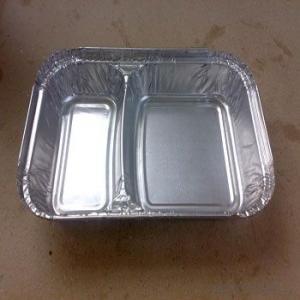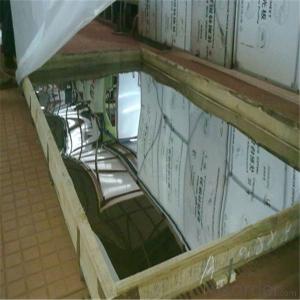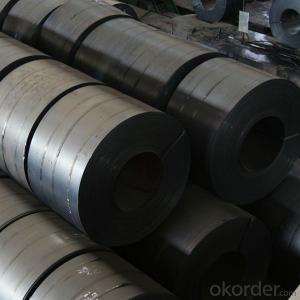Stainless Steel Dinner Plates
Stainless Steel Dinner Plates Related Searches
Best Paint For Stainless Steel Blanket Insulation For Steel Buildings Primer For Galvanized Steel Foam Filter For Stainless Steel H S Code For Stainless Steel Surface Grinding Wheels For Stainless Steel Surface Grinding Wheels For Hardened Steel Hole Saw For Stainless Steel Paint For Stainless Steel Stainless Steel For BbqHot Searches
Steel Mesh Panels For Sale Price For Stainless Steel Scrap Scrap Price For Stainless Steel Price For Stainless Steel Stainless Steel Tank For Sale Stainless Steel Sheets For Sale Cheap High Tea Sets For Sale Stainless Steel Tanks For Sale Stainless Steel For Sale High Density Fiberboard For Sale Solar Hot Water Collectors For Sale Scaffolding For Sale In Uae Scaffolding For Sale In Ireland Scaffolding For Sale In Houston Type Of Inverter For Solar Price Of Shipping Containers For Sale Types Of Inverter For Solar Stock Price For Aluminum Used Solar Inverter For Sale Steel Mesh Panels For SaleStainless Steel Dinner Plates Supplier & Manufacturer from China
Okorder.com is a professional Stainless Steel Dinner Plates supplier & manufacturer, offers integrated one-stop services including real-time quoting and online cargo tracking. We are funded by CNBM Group, a Fortune 500 enterprise and the largest Stainless Steel Dinner Plates firm in China.Hot Products
FAQ
- The main difference between 304 and 316 stainless steel pipes lies in their composition. While both alloys are corrosion-resistant, 316 stainless steel contains higher levels of molybdenum and nickel, making it more resistant to pitting and crevice corrosion in chloride environments. Additionally, 316 stainless steel offers better overall corrosion resistance and increased strength at elevated temperatures compared to 304 stainless steel pipes.
- The difference between galvanized steel pipe and stainless steel pipe
- Cast iron pipes (Cast, Iron, Pipe), cast cast pipe. Cast iron pipes are used for water supply, drainage and gas transmission lines. They include cast iron pipes and pipe fittings. Labor intensity is small. According to the casting method, it is divided into continuous cast iron pipe and centrifugal cast iron pipe, in which the centrifugal cast iron pipe is divided into sand mould and metal type two kinds. Divided into gray cast iron pipe and nodular cast iron pipe according to different material. According to the interface form, it is divided into flexible interface, flange interface, self anchored interface, rigid interface and so on. Among them, the flexible iron pipes rubber sealing ring; flange interface cast iron pipe flange fixed in the rubber pad, the flange gasket sealing; rigid interface cast iron pipe socket is large, straight pipe is inserted, sealed with cement, this technology has been basically eliminated
- The main difference between 17-7 and 15-7 stainless steel pipes lies in their composition and properties. The numbers 17-7 and 15-7 refer to the specific ratios of alloys present in the stainless steel. 17-7 stainless steel contains approximately 17% chromium and 7% nickel, along with small amounts of other elements. This composition gives it high strength, excellent formability, and good corrosion resistance. It is often used in applications that require high strength and resistance to fatigue, such as aerospace components and springs. On the other hand, 15-7 stainless steel contains approximately 15% chromium and 7% nickel, with the addition of 2% molybdenum. This addition of molybdenum enhances the material's corrosion resistance, making it suitable for applications in harsh environments and chemical processing industries. In summary, while both 17-7 and 15-7 stainless steel pipes offer good corrosion resistance and are capable of withstanding high strength requirements, 15-7 stainless steel pipes provide enhanced corrosion resistance due to the addition of molybdenum.
- Stainless steel pipes and PEX pipes have different characteristics and applications, which make them suitable for different plumbing systems. Stainless steel pipes are known for their durability and strength. They are highly resistant to corrosion, which makes them ideal for use in water supply systems, especially in areas with aggressive water conditions. Stainless steel pipes can withstand high pressure and temperature, making them suitable for both residential and commercial applications. They are also fire-resistant, which adds to their safety profile. Additionally, stainless steel pipes have a long lifespan and require minimal maintenance, making them a cost-effective option in the long run. On the other hand, PEX pipes are made of cross-linked polyethylene, which offers flexibility and ease of installation. PEX pipes are highly resistant to freezing and bursting, making them suitable for cold-climate regions. They have the ability to expand and contract, which reduces the risk of leaks or bursts due to temperature changes. PEX pipes are also corrosion-resistant, eliminating the need for expensive and time-consuming maintenance. Additionally, PEX pipes are quieter compared to metal pipes, as they dampen noise and vibration. When choosing between stainless steel pipes and PEX pipes, it is essential to consider factors such as the specific plumbing requirements, budget, and local building codes. While stainless steel pipes excel in durability and strength, PEX pipes offer flexibility and ease of installation. Ultimately, the choice between the two will depend on the specific needs of the plumbing system and the preferences of the homeowner or plumbing professional.
- When selecting a stainless steel pipe for a specific application, there are several factors to consider. These factors include the required corrosion resistance, temperature and pressure requirements, the type of fluid or gas being transported, the pipe size and thickness, the desired strength and durability, and any specific industry standards or regulations that need to be followed. Additionally, the cost, availability, and ease of installation should also be taken into account. Overall, it is important to carefully evaluate these factors to ensure that the chosen stainless steel pipe is suitable for the intended application.
- Stainless steel pipes can be bent or shaped, but the ease of bending or shaping depends on various factors such as the thickness, diameter, and grade of the stainless steel. Generally, stainless steel pipes have a higher resistance to bending compared to other materials like copper or aluminum. However, with the use of specialized tools and techniques such as pipe benders or hydraulic presses, stainless steel pipes can be bent or shaped to desired angles or curves. It is important to note that excessive bending or shaping may cause the stainless steel pipe to weaken or distort, so it is crucial to follow proper procedures and guidelines to ensure the structural integrity of the pipe is maintained.
- Yes, stainless steel pipes can be used for chemical processing applications. Stainless steel is highly resistant to corrosion and can withstand a wide range of chemicals and temperatures, making it an ideal choice for chemical processing industries. Its durability, strength, and ability to maintain product purity make stainless steel pipes suitable for various chemical processes such as manufacturing, transportation, and storage of chemicals.
- The average weight of a stainless steel pipe can vary depending on its size, wall thickness, and length. Stainless steel pipes are available in different dimensions and grades, which can affect their weight. However, in general, stainless steel pipes tend to be heavier than pipes made from other materials due to the density of stainless steel. On average, a stainless steel pipe can weigh anywhere from a few kilograms to several hundred kilograms per meter, depending on the aforementioned factors. It is important to consult specific product specifications or consult with a supplier to determine the precise weight of a stainless steel pipe for a particular application.















































